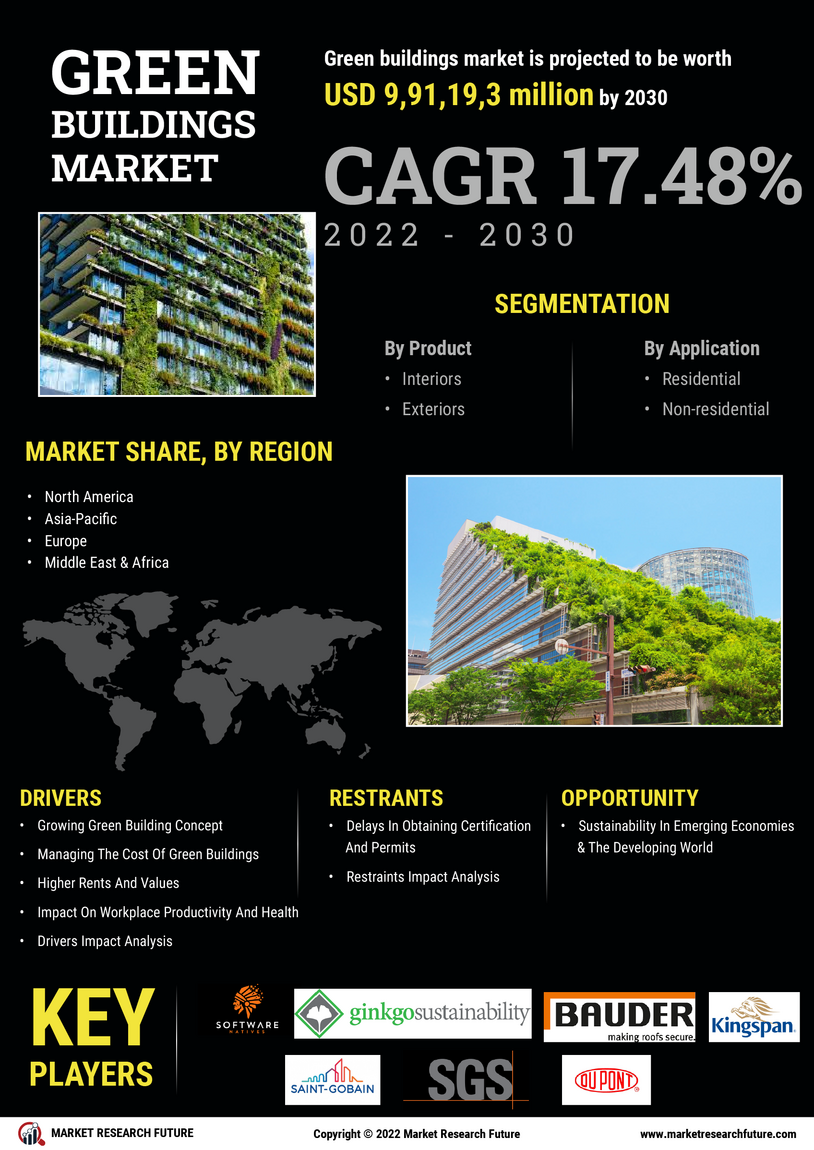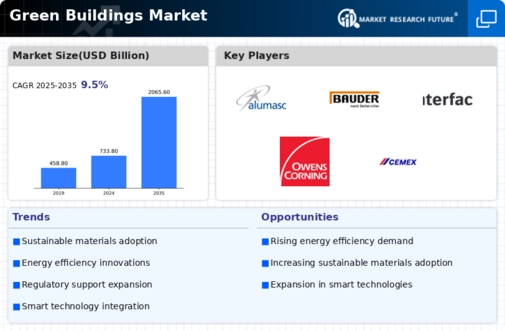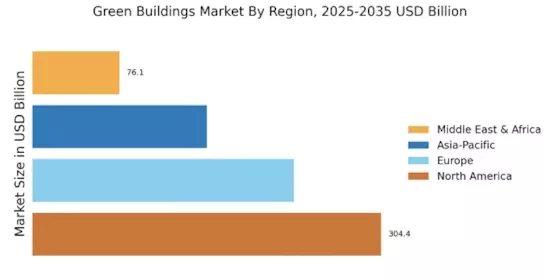Growing Environmental Awareness
There is a notable increase in environmental awareness among consumers and businesses, which serves as a significant driver for the Green Buildings Market. As climate change and environmental degradation become more pressing issues, stakeholders are increasingly prioritizing sustainable practices. Research indicates that 70% of consumers are willing to pay more for eco-friendly products and services. This shift in consumer behavior is prompting developers to invest in green building technologies and materials, thereby enhancing the market's growth. The rising demand for sustainable living spaces is likely to encourage innovation within the Green Buildings Market, leading to the development of more efficient and environmentally friendly building solutions.
Government Incentives and Policies
Government incentives and policies play a crucial role in promoting the Green Buildings Market. Many governments are offering tax credits, grants, and subsidies to encourage the construction of energy-efficient buildings. For instance, the U.S. Department of Energy has launched various programs aimed at supporting green building initiatives, which have resulted in a significant increase in the number of certified green buildings. These incentives not only lower the financial barriers for developers but also stimulate demand for green building technologies. As more governments recognize the importance of sustainable development, the Green Buildings Market is likely to experience accelerated growth driven by supportive policies.
Rising Energy Efficiency Standards
The increasing emphasis on energy efficiency standards is a pivotal driver for the Green Buildings Market. Governments and regulatory bodies are implementing stringent energy codes and standards, compelling builders and developers to adopt energy-efficient practices. For instance, the International Energy Agency has reported that energy-efficient buildings can reduce energy consumption by up to 50%. This trend not only enhances the sustainability of buildings but also lowers operational costs, making green buildings more attractive to investors and occupants alike. As energy efficiency becomes a priority, the demand for green building materials and technologies is expected to surge, further propelling the growth of the Green Buildings Market.
Health and Well-being Considerations
The growing focus on health and well-being in building design is emerging as a key driver for the Green Buildings Market. Research has shown that occupants of green buildings experience improved indoor air quality, natural lighting, and thermal comfort, which contribute to better health outcomes. This has led to an increased demand for buildings that prioritize occupant well-being. The World Green Building Market Council indicates that green buildings can enhance productivity by up to 15%. As awareness of the health benefits associated with green buildings rises, developers are increasingly incorporating wellness features into their designs, thereby fueling the growth of the Green Buildings Market.
Technological Advancements in Construction
Technological advancements in construction methods and materials are transforming the Green Buildings Market. Innovations such as prefabrication, 3D printing, and advanced building information modeling (BIM) are streamlining construction processes and reducing waste. For example, the use of BIM can lead to a 20% reduction in project costs and a 30% decrease in construction time. These technologies not only enhance efficiency but also promote the use of sustainable materials, aligning with the principles of green building. As these technologies become more mainstream, they are expected to drive the growth of the Green Buildings Market by making sustainable construction more accessible and cost-effective.


















Leave a Comment